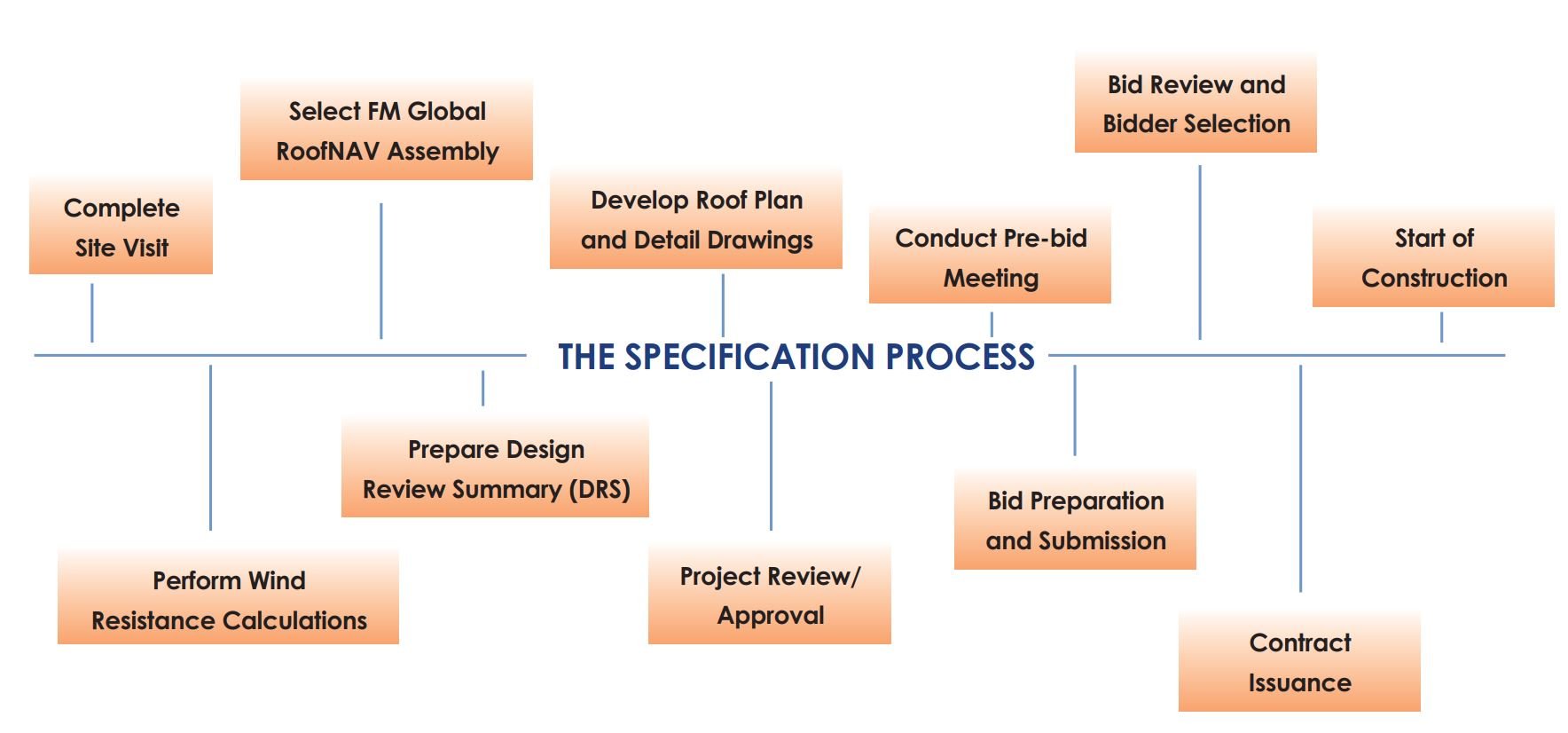By Alvin Nunnikhoven, RRC
Once you’ve contacted a roof consulting firm to prepare the necessary bid documents, technical specifications and drawings to replace an existing roof on your building, how long do you have to wait for the finished document? How long should the roof design and bidding process take?
The following article outlines the procedures Benchmark follows in developing roof specifications and bidding documents.
The first step – a site visit is conducted by a qualified consultant to collect data necessary for preparing the specification. During a site visit, the following data is gathered:
- Roof elevation heights above grade.
- Exterior wall openings beneath the roof.
- Review existing building drawings, if available, to verify/document existing roof perimeter and penetration details. If existing drawings are not available, core samples are taken to determine/confirm the substrate components and their condition. Existing detail conditions are then sketched.
- Review interior building operations and determine the need for interior protection from potential debris contamination during construction.
- If visible, visually review interior surface of roof deck and estimate the amount of deck replacement, if any.
- Assess possible project set-up and staging locations and the potential need for protection of adjacent roofs or ground level staging locations.
- Review roof drainage characteristics and determine the need, if any, for tapered insulation, additional drainage devices, etc.
After data collection, various calculations are performed to determine the required or recommended wind uplift resistance of the new roof system in order to comply with building codes and insurance requirements. The collected data and wind resistance calculations are used in selecting the replacement roof system.
Roof system selection can be significantly impacted by the building owner’s insurance carrier. Building owners insured by FM Global must use tested and approved roof assemblies. In 2006, FM Global implemented their RoofNav database as the only means of searching for approved roof assemblies. The database contains tens of thousands of approved roof assemblies and, depending on the potential roof type, the search and selection process can be quite extensive and time consuming. Upon agreement of the new system, the roof plan and drawings are prepared to illustrate the installation requirements.
After all of the roof details have been gathered, a Design Review Summary (DRS) is developed that summarizes project parameters, outlines potential options (including associated budgets), and summarizes the merits and shortcomings of each. This document and its contents are then reviewed by the owner and designer to identify the best replacement option based on the design criteria, budget, and facility requirements. Copies of the preliminary specification are also forwarded to the appropriate roofing material manufacturers, as well as FM Global, if applicable, for review.
Review by the roofing manufacturers ensures that the design is in compliance with the specified warranty requirements. Review by FM Global ensures that the design is in compliance and acceptable for the owner’s insurance carrier requirements. The typical time frame for the review process ranges from 15 to 30 days. After review letters are received, any necessary revisions are incorporated into the specification and drawings.
Upon approval from all parties, the replacement specification and associated details and drawings are finalized in preparation for bidding purposes. The typical time frame from the site visit through completion of the preliminary specification and drawings ranges from 30 days for non-FM projects to up to 60 days for FM projects.
During the review process, the consultant is also working with the owner and roofing manufacturer(s) to prequalify potential bidding contractors. The bidders’ list should be finalized by the completion of the review period.
The specification and drawings, now complete, are sent to the bidders and a pre-bid meeting is conducted. The pre-bid meeting is typically conducted at the project site to review the project specification requirements with the bidders. Bidders are given the opportunity to walk the roof(s) and gather information needed for bid preparation.
The average time frame for bid preparation and submission is 15 days following the pre-bid meeting. Bid submission times may be shortened for smaller, less complex projects, but longer times are usually required for larger, more complex projects.
After bids are received, they must be compiled and reviewed to determine the most responsive and responsible bidder(s); not necessarily the lowest bidder. Based on bid results, it may be necessary or advantageous to conduct bid review interviews with select bidders to determine the successful bidder. The time frame for bid review and bidder selection can vary significantly, but the average time is estimated at 15 days after bid receipt.
Now that the contractor has been selected, the contract between the owner and contractor must be issued. The required time for contract issuance varies greatly, but we estimate the average time to be 15 days.
Prior to the start of construction, the successful contractor must assemble and submit required project submittals to ensure compliance with the project specifications. In addition to these submittals, materials must be ordered and delivered to the site and roofing personnel scheduled and any site specific background checks/safety training completed. The time frame for roof replacement commencement between award of bid and beginning construction activities will vary significantly, but we estimate the average time to be 30 days.
Keep in mind, design time frames provided in this article are averages, and can vary significantly based on project size and complexity.

